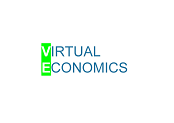New Policies, Measures and Responsibilities of Polluting Industries: A Case Study of the Egyptian Industries
DOI:
https://doi.org/10.34021/ve.2020.03.02(5)Keywords:
waste water, environment responsibility, environmental damagesAbstract
The paper provides a new approach to estimating the damage resulting from industrial wastewater. The measurement method proposed can be applied for all industries to determine the damage resulting from wastewater and to compare it with the environmental load of each pollutant. These measures help identify the environmental responsibility of a particular firm for a specific period and a level of pollution. Furthermore, they are to determine clearly the main industries that are accountable for the highest environmental damage according to the water pollutant loads. During March 2019, the proposed approach was tested on Abu Qir industries that are located in Egypt. Results urge for applying the proposed measures to wastewater pollutions, as well as for updating the current legislation to stimulate a management system’s efficiency. Results showed that phenol accounts for the highest percentage in paper production, followed by OILY pollutant in fertilizer production, COD and BOD in paper production and TSS in fertilizer manufacturing. Determining accurately the environmental responsibility for damages accelerates the spread of the clean industries.
Downloads
References
Alcamo, J., Döll, P., Kaspar, F., & Siebert, S. (1997). Global change and global scenarios of water use and availability: an application of WaterGAP 1.0. Kassel, Germany: Center for Environmental Systems Research, University of Kassel.
Estes, R. (1974). A comprehensive corporate social reporting model. The Federal Accountant, 1, 9-20.
Egyptian Law (1982, December 3-4). The Implementer Regulations for Law 48/1982 Regarding the Protection of the River Nile and Waterways from Pollution. Map. Periodical Bull, 12–35.
Fewtrell, L., Prüss-Üstün, A., Bos, R., Gore, F. & Bartram, J. (2007). Water, Sanitation and Hygiene: Quantifying the Health Impact at National and Local Levels in Countries with Incomplete Water Supply and Sanitation Coverage. Environmental Burden of Disease Series 15. Geneva: World Health Organization.
Larsen, B. (2007). Cost of environmental health risk in children under five years of age: Accounting for malnutrition in Ghana and Pakistan. Background report prepared for the World Bank. Washington, D.C.: Environment Department, The World Bank.
Larsen, B. K. (2019). Egypt: Cost of Environmental Degradation-Air and Water Pollution (No. 142308, pp. 1-0). Washington, D.C.: The World Bank.
Liang, S., Qu, S., Zhu, Z., Guan, D., & Xu, M. (2017). Income-based greenhouse gas emissions of nations. Environmental Science & Technology, 51, 346-355. https://doi.org/10. 1021/acs.est.6b02510
Linowes, D. F. (1972, January). Approach to socio-economic accounting. Conference Board Record, 9(11), 58-61.
Marques, A., Rodrigues, J., Lenzen, M., & Domingos, T. (2012). Income-based environmental responsibility. Ecological Economics, 84, 57-65. https://doi.org/10.1016/j.ecolecon. 2012.09.010
Pruss-Ustun, A., Bartram, J., Clasen, T., Colford, J., et al. 2014. Burden of disease from inadequate water, sanitation, and hygiene in low- and middle-income settings: a retrospective analysis of data from 145 countries. Trop Med Int Health, 19: 894–905.
Pigou, A. C. (2013). The economics of welfare. UK: Palgrave Macmillan.
Qian, Y., Behrens, P., Tukker, A., Rodrigues, J. F., Li, P., & Scherer, L. (2019). Environmental responsibility for sulfur dioxide emissions and associated biodiversity loss across Chinese provinces. Environmental Pollution, 245, 898-908.
Rosegrant, M. W., Cai, X., & Cline, S. A. (2002). Global water outlook to 2025: averting an impending crisis. Colombo, Sri Lanka: International Water Management Institute.
Rosegrant, M. W., Cai, X., & Cline, S. A. (2002). Water and Food to 2025. Colombo, Sri Lanka: International Water Management Institute.
Salman, D. (2011). Industrial development and the trade-off to environment: measurement techniques, meanings and outcomes in the context of water poverty in Egypt. International Journal of Green Economics, 5(1), 87-108.
Seckler, D. W. (1998). World water demand and supply, 1990 to 2025: Scenarios and issues Vol. 19. Colombo, Sri Lanka: Iwmi.
Scoville, J. N. (1995). Value theory and ecology in environmental ethics: a comparison of Rolston and Niebuhr. Environmental Ethics, 17(2), 115-133.
Wolf, J., Pruss-Ustun, A., Cumming, O., Bartram, J., et al. (20140. Assessing the impact of drinking water and sanitation on diarrheal disease in low- and middle-income settings: systematic review and meta-regression. Tropical Medicine and International Health, 19, 928–942.
World Bank. (2008). Environmental health and child survival: Epidemiology, economics, experiences. Washington, D.C.: World Bank.





